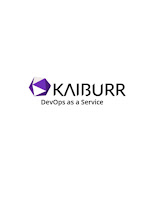Value stream management (VSM) is one of the most important strategic tools you can use to reduce waste and boost profitability in your business, but it isn’t easy to implement effectively. VSM makes sense on paper, but how do you make it happen? Following these steps will help you introduce value stream management into your organization in an efficient and effective way.
What is Value Stream Management?
Value stream management is a core tool of lean manufacturing and helps companies eliminate waste. The concept has many names, including value stream mapping, value stream analysis, and more. At its most basic level, it’s about understanding how products are made and identifying where steps are unnecessary or redundant. Once you’ve identified those steps, you can refine your process by removing waste from your workflows. Doing so makes your company faster, more efficient, and ultimately less expensive—all wins for customers (and you).
What are the benefits of value stream mapping?
Even if you don’t have a firm grasp of your business processes, it’s still possible to get value out of value stream mapping. For one thing, mapping your value streams is a way of identifying waste and prioritizing your improvements. It also helps employees understand their role in making or breaking processes (which is often eye-opening). Perhaps most importantly, with tools like Lean Six Sigma at your disposal, it’s never been easier to make big improvements that pay off quickly. Before making major changes on an assembly line or within a team project, start by thinking about how those changes will help you create value for customers. With that end goal in mind, improving quality and reducing costs are two powerful reasons why businesses should consider implementing Lean Six Sigma initiatives.
The steps involved in VSM
First, assess your value chain and determine where value is being added and where there are redundant processes. This is often referred to as a value stream map. Next, streamline these processes so that value creation becomes more efficient and waste is eliminated. Finally, monitor performance regularly over time—even after you’ve made improvements—and continue improving by making ongoing adjustments.
Tips for implementing VSM
value stream management is a fancy name for a lean business practice that focuses on efficiency and eliminating waste. By focusing on activities that produce value, it’s possible to create more value with fewer resources. In other words, eliminate as much unnecessary work as possible while ensuring that you provide your customers with top-quality products and services. If you’re struggling with how exactly to implement VSM in your business, try these tips
.jpg)
.jpg)



.jpg)


0 Comments